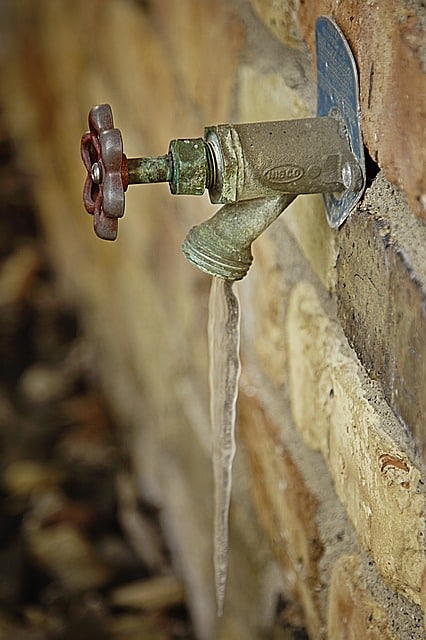Did you know a 1/8-inch crack in a pipe can release up to 250 gallons of water in a single day? That’s why it’s important to protect your plumbing when the temperature dips below freezing. Water in pipes expands as it turns into ice. Pipe bursts. And you are left with an expensive mess to clean up.
The worst part? You probably could have avoided that mess by taking a few simple precautions during the winter months.
What to do Before the First Freeze
Make it part of your winterizing routine to:
- Insulate pipes and faucets at risk of freezing. The biggest trouble spots include exposed pipes outside your home as well as those that sit in less-heated areas of the house (like an attic or garage) and those that lie inside exterior walls. Keep pool equipment and outdoor kitchens in mind. Install insulated covers on outdoor faucets, and wrap exposed pipes with insulated sleeves — both of which are inexpensive and easy to do yourself. Spray foam insulation into gaps where plumbing is exposed to cold air.
- Disconnect, drain, and store your exterior hoses. A frozen hose can actually cause an interior pipe to burst because it increases pressure on the entire plumbing system.
- Know where your water cut-off is and how to use it. Most homes have a main cut-off valve that cuts a home’s plumbing system off from the city’s water supply. Knowing where that valve is and how to access it can prevent a small issue from becoming a major repair project. In Dallas, many cut-off valves are hidden under streetside utility covers that require a special key to open. If this is your case, make sure you have that key (which can be purchased inexpensively from a hardware store) and know how to use it.
Protecting Your Pipes During a Freeze
When you know the temperature will dip below 32 degrees:
- Turn up your thermostat. Keeping the air inside the house warm also warms the plumbing system. Make sure vents are open in areas of the home that are at risk of frozen pipes.
- Set your inside faucets to a slow drip. This keeps the water moving, which relieves pressure on the system and can keep it from freezing inside the pipes. If you know how your plumbing is laid out, you can selectively open those furthest away from the water main, which will keep the whole system flowing.
- Open cabinet doors and keep the garage door closed. Opening the cabinet doors under sinks allows your home’s heat to circulate around their pipes. (Make sure to remove cleaners or other chemicals if children are in the house.) If you have any plumbing fixtures inside your garage, closing the garage door will help protect them.
Make sure you have the number of a plumber in easy reach in case a pipe does freeze. But with the minor investment of time and money to take these simple steps, you are much less likely to need it.



